
|
Vol 77 |
Page 11 |
Privacy Policy | Editorial Policy | Profit Policy | Join the Association | List of Members | Contact us | Index | Links
Back Go to page: 1 2 3 4 5 6 7 8 9 10 11 12 13 14 15 16 17 18 19 20 Forward
Veterans and Veterans Families Counselling Service (VVCS) can be reached 24 hours a day across Australia
for crisis support and free and confidential counseling. Phone 1800 011 046.
VVCS is a service founded by Vietnam Veterans.

Health and Life-style.
Contents.
Exercise - when is the best time?
Medical myths that won't go away.
Exercise.
What’s the best time to exercise, morning or evening?
Sometimes scientists go to a lot of trouble, deliver something interesting, complex and promising, even beautiful in a way and yet they seem to fall short in answering the basic question the rest of us are interested in.

The question of ‘is it better to exercise in the morning or evening?’ has been extravagantly investigated in a new study. The results were fascinating for scientists, but remain, for the time being, old news in their usefulness for regular folk.
The new Atlas
A group of German scientists recently produced a monumental Atlas of Exercise Metabolism, “a comprehensive map of exercise-induced signalling molecules present in different tissues following exercise at different times of day”. In effect, they have mapped how different parts of the body, tissues and organs and the molecular clocks that exists in every cell, become excited and ‘talk’ to one another after we’ve gone for a jog.
These signals have “a broad impact on health, influencing sleep, memory, exercise performance, and metabolic homeostasis.
One interesting finding was how “exercise can help to ‘realign’ faulty circadian rhythms in specific tissues”. For example, faulty circadian clocks have been linked to increased risks of obesity and type 2 diabetes. There’s a lot to it, and in the long run this project could be highly influential in developing a more nuanced understanding of how we benefit (or don’t) from working out at different times of the day.

The New York Times ran a lengthy piece that called the study, which involved mice jogging on tiny treadmills – “ambitious”, but in the end, if the mice behaviours hold true in people, the NYT concluded, “it might suggest morning exercise contributes more to fat loss, whereas late-day workouts might be better for blood-sugar control”.
But we’ve known that for quite a while now.
Supporting the idea that exercising in the evening is particularly good for people with type 2 diabetes is new research from the Australian Catholic University, published last year. You can read a friendly translation of the findings on Diabetes Australia’s website. Look for the headline: ‘Evening workouts could boost metabolism and control blood sugar levels’. There’s plenty of research supporting morning as the long-favoured time to work out but there is growing evidence that evening exercise delivers its own significant benefits.
Reported benefits of a morning workout
Perhaps the strongest argument for exercising in the morning is it’s the best way to burn stored fat and lose more weight, especially if done on an empty stomach. A 2019 report in TIME magazine featured Dr Anthony Hackney, a professor in the department of exercise and sport science at the University of North Carolina Chapel Hill. Dr Hackney advised that this weight loss occurred because “the body’s hormonal composition in the morning is set up to support that goal”. In the early morning hours, he said, “you have a hormonal profile that would predispose you to better metabolism of fat”. He said that people naturally have elevated levels of cortisol and growth hormone in the morning – both of which are involved in metabolism. This what causes you to “draw more of your energy from your fat reserves”.
There’s also evidence that morning exercise serves to suppress your appetite.

Research from Brigham Young University (2012) found that 45 minutes of moderate-to-vigorous exercise in the morning reduced a person’s motivation for food. The 35 female participants were shown photographs of food and had their brain activity measured following the workout. The ‘attentional response’ to the food pictures actually decreased after the brisk activity. “This study provides evidence that exercise not only affects energy output, but it also may affect how people respond to food cues,” the authors said.
The morning workout also resulted “in an increase in total physical activity that day, regardless of body mass index”. “We wanted to see if obesity influenced food motivation, but it didn’t,” the authors said. Interestingly, the women in the experiment did not eat more food on the exercise day to “make up” for the extra calories they burned in exercise. In fact, they ate approximately the same amount of food on the non-exercise day.
A 2014 study from Appalachian State University found that 30 minutes of moderate-intensity exercise on a treadmill at 7am resulted in lower blood pressure scores and improved overall sleep quality compared to the same exercise done at 1pm or 7pm.
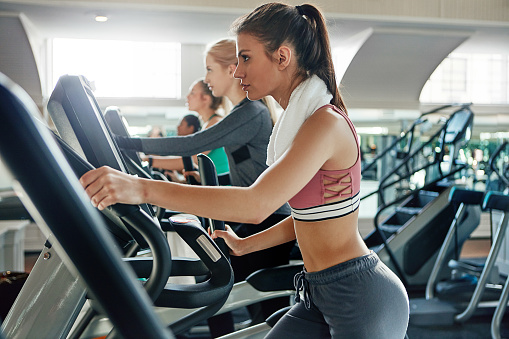
Reported benefits of evening exercise
One of the problems with morning workouts is we tend to wake up stiff and not so flexible and your resting heart rate is lower than later in the day, all of which means you’ll take longer to warm up before commencing your workout. Also, your core temperature is lower than in the evening. As our body temperature increases, so does muscle function, strength, performance and endurance, as found in a 2013 study that compared morning and evening performance.

According to an explainer at Healthline, oxygen uptake kinetics are faster in the evening, “which means you use your resources more slowly and effectively than in the morning”. There’s also evidence that when exercising in the evening, it takes us 20 per cent longer to reach exhaustion. Again, this suggests we get a better quality workout and perform better in the evening.
This perhaps matters more to people involved in competitive sports.
As mentioned, evening exercise provides better control of blood sugar in people at risk of developing Type 2 diabetes. The Australian Catholic University research published last year found that “men who were overweight and at risk of diabetes had better overnight blood sugar control when they exercised in the early evening rather than in the morning”. The later workouts upped the metabolic health of the evening exercisers more “than those who performed the same exercise earlier in the day”.
Given that 280 Australians develop diabetes every day, perhaps more of us need to take that brisk walk in the late afternoon.
One long-standing argument against exercising at night is that it disrupts sleep. That might not be true. A 2019 paper found that evening high-intensity workouts do not disrupt sleep. Even better, late-day exercise will eventually reduce levels of the hunger-stimulating hormone ghrelin. So working out in the evening can, over time, suppress appetite when you really need it suppressed, to avoid bedtime snacking and buttered-toast weight gain.

Anti-masker drowns after trying out Skuba diving.
Medical misconceptions that just won't go away.
Here's what you certainly should not be doing when faced with a first-aid problem.
There are a number of misconceptions about what to do in medical emergencies still swirling about by word of mouth, sometimes perpetuated by articles supporting these old wives’ tales, however, there are some things we should certainly not be doing when faced with a first-aid problem. Here are some good rules to stick to when facing a medical emergency, including what not to do and some good advice to listen to instead.
Keep butter away from burns.
The first thing to do after experiencing a burn is to gently cool the skin. This helps stop extra damage occurring from the burning process. Putting butter or other greasy ointments on a burn may actually make things worse, since the grease will slow the release of heat from the skin. The best way to release heat and gently cool the skin is with cool water. Ice and ice water are too harsh and may further aggravate already damaged skin.
Using butter to treat burns is an old folk remedy that has been around for centuries. It gained credibility when the Prussian Surgeon General Friedrich Von Esmarch recommended it in his influential 19th Century handbook on battlefield medicine, however, it reads more like a recipe than an emergency procedure, saying that burns should be “painted over with grease or butter, or powdered with flour, starch or powdered charcoal to alleviate the pain.” The idea was to seal the burn off from the air, keep it clean, prevent infection and help the healing process. The only way butter will make you feel better in a situation like this is slathered on a thick piece of toast.
If you’re cleaning a wound, keep the peroxide away.
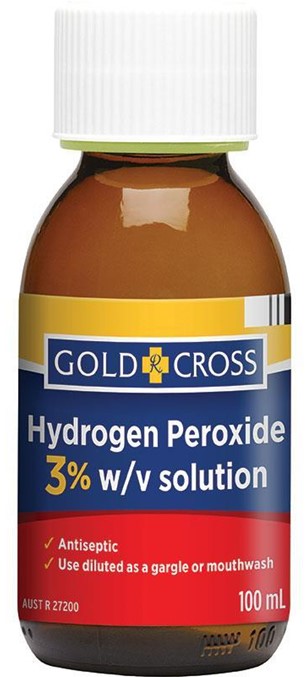
Hydrogen peroxide has been used as a first aid antiseptic for injured skin since the 1920s. It can still be found in many first-aid kits and medicine cabinets today. It used to be the go-to when cleaning a wound but while it might help sterilise a cut, it could also be doing plenty of damage. Years of research has found that the caustic nature of hydrogen peroxide and rubbing alcohol (another commonly used first aid antiseptic) can destroy healthy skins cells around the wound. The surrounding skin needs to be as healthy as possible to heal and knit back together, leaving the smallest scar possible.
The best remedy for a wound of a manageable size is to wash it with antibacterial soap and water, dry it and affix an appropriately sized bandage.
Avoid tipping your head back with a nosebleed.
Nosebleeds are a common, minor injury. Sometimes they even show up in the absence of an injury, just to make life that little more difficult. The traditional nosebleed remedy is another one of the most common medical misconceptions. If you get a nosebleed, don’t tip your head back. This can cause blood to run into your throat which can make you cough or choke. If you swallow a lot of blood, it can also make you vomit. Try these simple tips to stop a nosebleed instead, hold some tissues or a damp cloth to catch the blood, sit up or stand, tilt your head forward and pinch your nostrils together just below the bony centre part of your nose. Applying pressure helps stop the blood flow and the nosebleed will usually stop with 10 minutes of steady pressure. Don’t stop applying pressure to keep checking if the bleeding has stopped.
Don’t apply heat to a recently sprained ankle.
Sprains and small fractures can range from inconvenience to serious hindrance. How they are treated can have a major influence on how quickly they heal. Typically, icing is recommended in the first day or two after the injury as ice decreases blood flow to an area, which causes less swelling. Heat, on the other hand, will bring blood flow to an area which can cause more swelling. Only ice a body part for 10 to 15 minutes at a time, with something in between the ice pack and your skin to protect it. Long-term icing can be detrimental to the healing process by limiting the amount of muscle repairing cells that can access the site of the injury.
Leave tongues alone.
There’s an old belief that someone could ‘swallow their tongue’ while passed out. “That’s not what happens” asserts Robb Rehberg, a director of first aid training and program development, “what happens is that the soft tissue in our airway can close off if we’re not responsive.” In the event of an unresponsive individual, Mr Rehberg says the first thing he teaches his students is “how to open the airway very easily by tilting their head and lifting their chin.” By positioning the head in this way, you can prevent the threat of suffocation.
Similarly, it was a long-held belief that someone experiencing a seizure could bite their tongue off, so people were advised to give those in a seizure state a wooden spoon or even a wallet to bite down on. Mr Rehberg’s advice is to “never put anything in the mouth of someone having a seizure.” The best protocol is to let the seizure pass, then assist with any injuries, putting your hands near the mouth of a seizure victim could be harmful to them and you.
Don’t vomit poison up, talk to professionals.
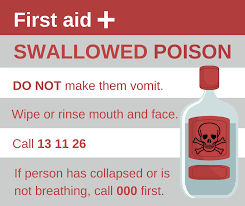
The swallowing of poison is a medical emergency and the most important steps to take are to call emergency services and contact the Poisons Information Centre. Many think that inducing vomiting is the best response if they, or someone they know, have ingested something poisonous. But there are situations where that’s not the right move. Some substances can cause more damage on the way back up.
Don’t drink alcohol to cure a cough.
Over the course of human history, there have been several remedies or medical treatments that include drinking alcohol. It was long believed that such substances were stimulants, and, as a result, were recommended for a variety of medical professionals for use in certain situations. A Johnson’s First Aid Manual from 1909 suggests that a sip of brandy could help “encourage circulation” in the case of a victim who has recently recovered from artificial respiration. Such usage has declined significantly over time and is no longer recommended.
The biggest takeaway is that when it comes to any medical situation, you should first and foremost defer to the professionals. You may also find it useful to receive first aid and CPR training so you know what to do in emergency situations you may encounter.
Surprising uses for petroleum jelly
One of the most versatile jars in your medicine cabinet.
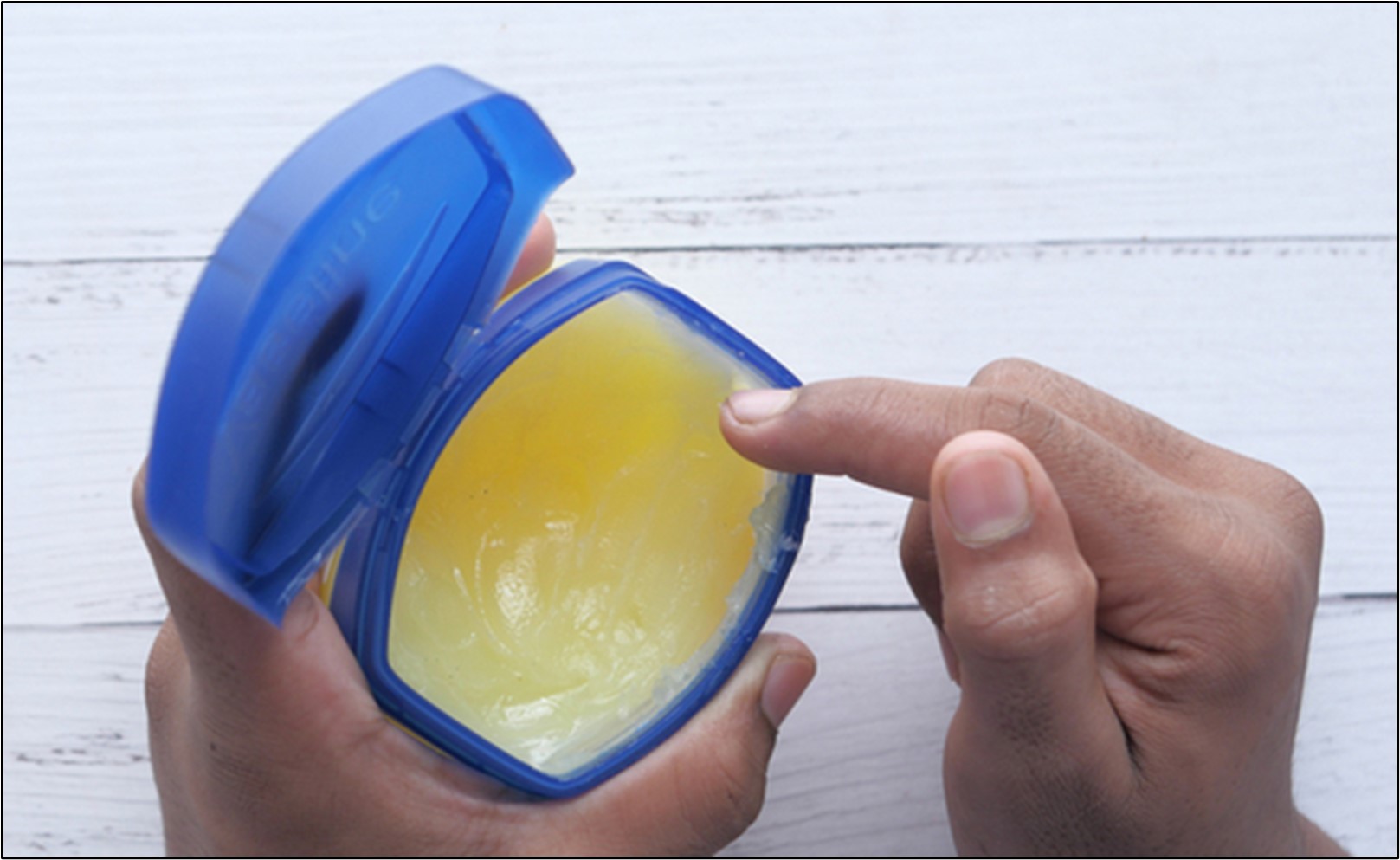
Take a peek inside any medicine cabinet and you’re likely to find a small jar of Vaseline nestled among the various tubs and packets. Vaseline is a popular brand of petroleum jelly that was created more than 160 years ago. It’s a mixture of minerals and waxes that are easily spreadable, with petroleum being the main ingredient.
You may be more familiar with other petroleum by-products, such as kerosene and gasoline. Just like those products, petroleum jelly has a slick and filmy consistency, but unlike other forms of petroleum, petroleum jelly is safe to use on your skin and hands and is often used as a healing balm and ointment for burns and chafed skin.
Here are some other uses for petroleum jelly.
Helps to heal wounds. Dermatologists are often fans of petroleum jelly as it seals water into your skin. This is great for wounds as they heal quickest in a moist environment; it may take up to twice as long for dry injured skin to repair. The oil and moisture may also dull the redness of a new scar and help to prevent infection. It also won’t burn or sting when you apply it, making it especially good for children.
Prevents windburn. Rub a thin layer of petroleum jelly to the parts of your face that will be exposed to the cold wind. You can also dab a little under your nose if it gets dry. You may want to avoid areas that are acne prone as it can trap bacteria and oil in your skin, potentially worsening breakouts.
Relief for psoriasis. Psoriasis outbreaks are more likely to happen if your skin is dry. Applying petroleum jelly in areas where you often see psoriasis symptoms is a good proactive measure. If your skin gets really dry, it could crack and let in bacteria. Petroleum jelly can ease inflammation and keep your skin moist without irritating it, this usually means you’ll scratch less too.
Kills headlice (but not the eggs). You may have heard of petroleum jelly as a home remedy for lice. Research shows it may kill adult lice, but it doesn’t keep the eggs from hatching. That means it’s not a good way to control lice. You should use a specific medicated shampoo to eradicate the headlice.
Nail moisturiser. Petroleum jelly can hydrate all parts of your hands, including your nails. If your nails are brittle, it can help fill in and smooth out some of the ridges and rough spots. If you get manicures a lot, you may want to dab some on after your next session, but make sure your nails are still a little damp first to seal in the water.
Prepares skin for perfume. Moisturised skin may hold scents better, so rub some petroleum jelly on your pulse points before you spritz to make your fragrance lasts longer. Pulse points are warm areas that help diffuse the fragrance across the body, they include the wrists, inner elbows, back of the knees, and the neck.
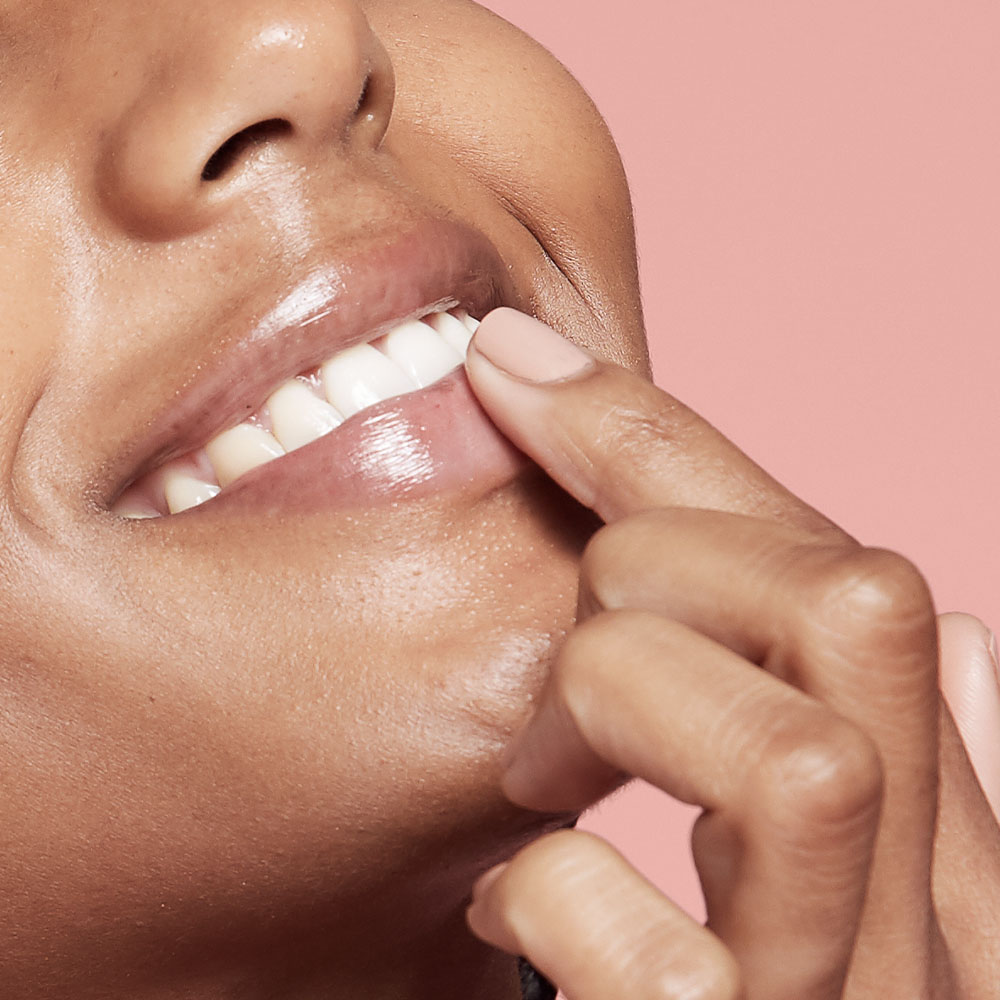
DIY lip balm. Add a bit of sugar to petroleum jelly to make your own lip balm. Or mix it with sea salt and use the mixture in the shower as a body scrub with moisturising benefits.
Prevents skin stains from hair dye and nail polish. Apply petroleum jelly along your hairline to prevent hair dye staining your skin. This also works if you like to paint your nails at home. A barrier of petroleum jelly is easy to wipe away when you’re done.
Prevents blisters. Before you head out for a run, rub some petroleum jelly between your legs or on your heels. It may keep you from chafing in areas that rub together. If you do get a blister, petroleum jelly on the sore can help it heal.
Helps haemorrhoids. Petroleum jelly may help you feel better if you have a flare. Putting a thin layer inside your anal area can protect sensitive skin and may help it itch less too.
Prevents razor blades from rusting. Keep your razors like new by smoothing a very thin layer of petroleum jelly onto the blades between uses. Make sure they’re completely dry first to prevent rust.
Prevents nail polish bottles from sticking. A dab of petroleum jelly under the cap of your nail polish can prevent dried lacquer from making the bottle impossible to open.
Things to avoid.
Greasiness. A little petroleum jelly goes a long way. It’s safe to use even on oily skin; but the heavy, greasy feeling may not be what you’re aiming for with your skincare routine, especially if you have combination oily or extremely oily skin.
Stains. Oil-based products may stain fabric or carpet, so if you’re using it to moisturise hands or feet, pop socks or gloves on afterwards.
Don’t put it on new sunburn. Oil-based products can keep heat inside your skin, so it’s better to reach for an aloe vera or soy-based product instead.
Don’t use it for sex. Petroleum jelly could cause latex condoms to break. If you’re female, it might raise your chances of getting bacterial vaginosis. Try a water-based option instead.

How safe is the five-second rule?
Is the popular five-second rule fact or fiction? Let’s have a look.

We’ve all dropped a piece of food on the floor and considered picking it up to eat instead of throwing it away, but how safe is it? You’ve probably heard of the ‘five-second rule’, where people believe (or hope) that if dropped food sits on the floor for less than five seconds it’s safe to eat. I suppose people like to think that if you snatch the food up quickly enough, the microorganisms from the surface it landed on won’t have time to transfer. But is that the truth?
“Well, I actually don’t like to tell people what to do,” said Don Schaffner, extension specialist and distinguished professor in the department of food science at Rutgers University. “I like to tell people about the science and let them make their own decision. Certainly, if you drop something on the ground, it may contact germs, and if you eat those germs, they may make you sick.”
Many people believe it depends on several variables, including the type of food, type of floor and what that surface is potentially contaminated with. It makes sense that sticky food will attract more germs than dry food, and a tiled floor is probably cleaner than carpet, right? While very few studies exist on this topic, two public research studies have tested the five-second rule. What they discovered may surprise you.
The research.
The first research study was completed by Jillian Clarke in 2003 at the University of Illinois. Dr Meredith Agle, who supervised the study, said: “Jillian swabbed the floors around the university in the lab, hall, dormitory, and cafeteria to see how many organisms we could isolate. We examined the swabs, and there were very few microorganisms. That surprised me. I told her to do it again.” The results were the same. “I think the floors were so clean, from a microbiological point of view, because floors are dry and most pathogens such as salmonella, listeria, or E. coli can’t survive without moisture.”
To control the study, biscuits and gummy bears were placed on both rough and smooth sterile tiles covered with measured amounts of E. coli. “We did see a transfer of germs before five seconds,” confirmed Dr Agle. Ms Clarke also conducted a survey that found 70 per cent of women and 56 per cent of men said they were familiar with the rule, but women were more likely to invoke it. The respondents admitted they were also more likely to eat dropped biscuits and lollies more often than dropped broccoli and cauliflower.
In 2016, research from Rutgers University disproved the notion that there’s a ‘safe’ window of time to eat dropped food. The study found that moisture, type of surface and contact time all contribute to cross-contamination and, in some instances, the transfer begins in less than one second. “The popular notion of the ‘five-second rule’ is that food dropped on the floor, but picked up quickly, is safe to eat because bacteria need time to transfer.” That’s not true. To test this, four surfaces were tested – stainless steel, ceramic tile, wood and carpet, and four different foods watermelon, bread, bread and butter, and gummy candy were chosen.
They also looked at four different contact times:
-
less than one second
-
five seconds
-
30 seconds
-
300 seconds.
Not surprisingly, watermelon had the most contamination and gummy candy the least. “Transfer of bacteria from surfaces to food appears to be affected most by moisture,” said Prof. Schaffner. “Bacteria don’t have legs, they move with the moisture, and the wetter the food, the higher the risk of transfer. Also, longer food contact times usually result in the transfer of more bacteria from each surface to food.”
Perhaps unexpectedly, carpet had very low transfer rates compared with those of tile and stainless steel, whereas the transfer from wood was more variable. “The topography of the surface and food seem to play an important role in bacterial transfer,” said Prof. Schaffner.
So, while a longer contact time did result in more bacterial transfer, the five-second rule is a huge oversimplification of what is actually happening when bacteria transfer from a surface to food. Bacteria can contaminate instantaneously. They’re not waiting around. In addition, foodborne illnesses can have varying onset, ranging from 24 hours to a week, so, if the food you picked up and ate last Wednesday was responsible for sidelining you over the weekend, you probably wouldn’t even associate the two events.
Who should be the most careful?
If you’re a healthy adult, you may be okay when following the five-second rule, however, there are some people, including young children, older adults, pregnant women and people with compromised immune systems who have a higher risk of developing complications from eating food off the floor. If you’re ever in doubt about what to do, most experts agree that the safest thing is to err on the side of caution. If you’re not sure whether it’s safe to eat something that’s fallen on the floor, just throw it out.
It's amazing how many parents went from:
“I don’t understand my kid’s 6th grade maths homework” to
“I’m an infectious disease expert” in just six months.
Seven frozen food mistakes.
Buying frozen food or freezing meals in advance is a great way to save money and reduce food waste, especially in small households, however, when it comes to preparing and freezing meals, many people make these common, unhygienic mistakes. For your own health and safety, avoid these frozen food fails.
Thawing food on the kitchen bench.
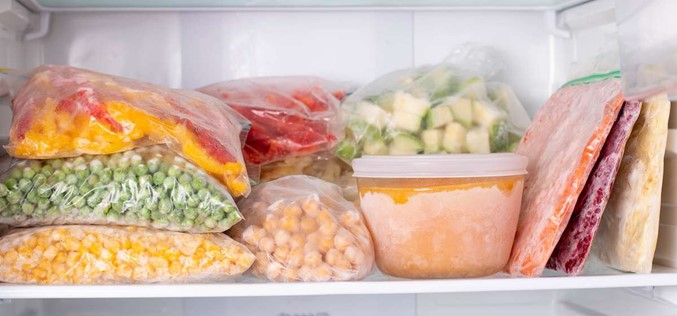
As soon as frozen food warms to four degrees or more it will begin to thaw. If bacteria were present before the food was frozen it may begin to multiply, so it is important to thaw food safely. Never leave food to thaw on the counter or in hot water. Even if the centre of the food is still frozen, the outside of it may enter the danger zone, between five and fifty degrees Celsius.
Instead, thaw frozen food in the refrigerator, where it can be kept at a stable, cool temperature. Alternatively, you can thaw tightly packaged foods in cold water. This method is faster than refrigerator thawing, though you’ll have the change the water every half hour. If you plan to thaw your food in the microwave, cook it immediately after to prevent bacterial growth.
Not keeping clean.
While many people choose to eat frozen food for the ease and relative lack of cleaning, your kitchen space must be kept hygienic both before and after preparing your meal. This involves cleaning down your microwave after every use and washing your hands thoroughly before and after handling food.
Not cooking frozen food thoroughly.
Don’t assume that all frozen meals are precooked. Labels on food can be confusing, and many meals can look as though they have been cooked. If labels state ‘ready to cook’, ‘oven ready’ or ‘cook and serve’ it means that they have not yet been cooked and need appropriate cooking in order to prevent illness. Follow instructions.
Not boiling frozen berries.
There have been a few health scares surrounding frozen berries in the past and because of their high contact with work surfaces, hands and the different qualities of water in which they are washed, frozen berries can be carriers of viruses and bacteria. Few people know that experts recommend boiling frozen berries for a minute or two before using them, as cold temperatures do not kill bacteria.
Allowing freezer burn.
If you’ve ever pulled food out from the freezer to see that it has become dry or looks to be a brown or grey colour, this is freezer burn. This is caused when air interacts with frozen foods. You can still eat this food, though you may notice it tastes a little different. To avoid this, make sure you properly seal all your freezer bags. If you vacuum seal food bags for storage, make sure you’re doing the same with your frozen foods.
Eating soggy vegetables.
When you freeze and thaw vegetables, the water within the cells expands and retracts, leaving them mushier than when they were fresh, however, cooking them in an air fryer or a convection oven will leave moisture on the inside while crispening them on the outside. Because thawed vegetables are softer than fresh vegetables, it is recommended halving the time that you cook them for to avoid over cooking.
Not blanching your vegetables.
When you’re preparing your own vegetables to freeze, it’s important to blanch them first. Steam or boil your vegetables for two minutes then leave them in an ice bath to cool down. This will inactivate enzymes that would otherwise affect the nutritional value, colour and flavour of your vegetables.
Confucius say:
If you can fart through your jeans you can talk through your mask!
Fevers.
Even when you’re well, your body temperature varies, and that variation is normal. Doctors usually consider 370C (98.6F) a healthy body temperature. But your normal temperature may differ by a degree or more. In the morning, your temperature is generally lower, and in the afternoon it’s somewhat higher.
Often, a fever isn’t anything to worry about, but sometimes a fever should be evaluated, especially if it’s accompanied by other severe symptoms.

Contact a doctor in any of the following situations:
-
A child or adult with a temperature of more than 39.5C (103F)
-
A child or adult with a temperature of more than 38.3C (101F) for more than three days
-
An infant younger than 3 months with a rectal temperature of 38C (100.4F) or higher
-
An infant older than 3 months with a temperature of 38.8C (102F) or higher
Seek emergency medical care if any of these signs or symptoms accompany a fever:
-
Severe headache
-
Severe swelling of the throat
-
Unusual skin rash
-
Unusual eye sensitivity to bright light
-
A stiff neck and significant neck pain when you bend your head forward
-
Confusion or severe drowsiness
-
Persistent vomiting or abdominal pain
-
Difficulty breathing or chest pain
-
Extreme listlessness, irritability or poor eye contact
-
A seizure
-
A bulging soft spot on a baby's head
Sometimes, a high fever can cause a seizure in an infant or a child. This is known as a febrile seizure. If this occurs, lay your child on his or her side, gently supporting the child's head, until the seizure ends. Cool your child gradually, using a damp sponge or cool compress and lukewarm water. Don't immerse your child in a cold bath. Seek urgent medical attention. Most febrile seizures aren't dangerous, but fever accompanied by a seizure also could be a sign of a serious illness.
Fever itself isn't an illness, but it’s often a sign of one. A fever tells you that something is happening inside your body. Most likely your body is fighting an infection caused by either a virus or a bacterium.
Heartburn or heart attack: When to worry.
Severe heartburn and heart attack can be hard to tell apart. It is important to understand how they typically differ and learn when to get immediate help.
You've just eaten a big meal and feel a burning sensation in your chest. Heartburn, right? Probably, but there's a chance the chest pain is caused by reduced blood flow to your heart (angina) or an actual heart attack.
How much do the symptoms of heartburn and heart attack overlap?
Heartburn, angina and heart attack may feel very much alike. Even experienced doctors can't always tell the difference from your medical history and a physical exam. That's why, if you go to the emergency room because of chest pain, you'll immediately have tests to rule out a heart attack.
If you have persistent chest pain and you aren't sure it's heartburn, call 000 or emergency medical help. Call your doctor if you had an episode of unexplained chest pain that went away within a few hours and you did not seek medical attention. Both heartburn and a developing heart attack can cause symptoms that subside after a while. The pain doesn't have to last a long time to be a warning sign.
What is heartburn?
Heartburn is discomfort or actual pain caused by digestive acid moving into the tube that carries swallowed food to your stomach (esophagus). Typical features of heartburn include:
-
Starts as a burning sensation in the upper abdomen and moves up into the chest
-
Usually occurs after eating or while lying down or bending over
-
May awaken you from sleep, especially if you have eaten within two hours of going to bed
-
Is usually relieved by antacids
-
May be accompanied by a sour taste in your mouth, especially when you're lying down.
-
May be accompanied by a small amount of stomach contents rising up into the back of your throat (regurgitation)
What signs and symptoms are more likely to occur with a heart attack than with heartburn?
The "textbook" heart attack involves sudden, crushing chest pain and difficulty breathing, often brought on by exertion. Many heart attacks don't happen that way, though. The signs and symptoms of a heart attack vary greatly from person to person. Heartburn itself can accompany other symptoms of heart attack. Typical heart attack signs and symptoms include:
-
Pressure, tightness, pain, or a squeezing or aching sensation in your chest or arms that may spread to your neck, jaw or back
-
Nausea, indigestion, heartburn or abdominal pain
-
Shortness of breath
-
Cold sweat
-
Fatigue
-
Light-headedness or sudden dizziness
The most common symptom of heart attack for both men and women is chest pain or discomfort, but women are more likely than men to experience some of the other symptoms, such as jaw or back pain, shortness of breath, and nausea or vomiting. Heart problems are more common among people who have high blood pressure, diabetes or high cholesterol. Smoking and being overweight are other risk factors.
Can other digestive symptoms cause chest pain?
A muscle spasm in your esophagus may cause chest pain similar to that of a heart attack. The pain of a gallbladder attack also can spread to your chest. With gallbladder disease, you may notice nausea and an intense, steady ache in the upper middle or upper right abdomen, especially after a fatty meal. The pain may shift to your shoulders, neck or arms.
Again, if you are not sure seek medical attention immediately.
The most terrifying moment in life
is when the toilet refuses to flush at someone else’s house.
Back Go to page: 1 2 3 4 5 6 7 8 9 10 11 12 13 14 15 16 17 18 19 20 Forward